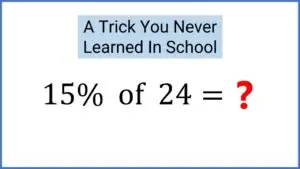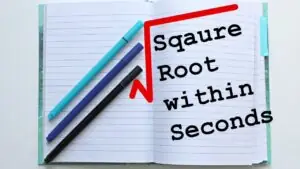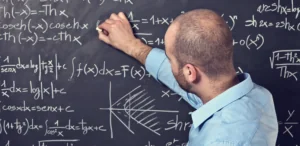TLDR
The video demonstrates how to convert different types of decimals into their equivalent fractions. It covers three main types: terminated decimals (e.g., 0.75, which becomes 75/100 and simplifies to 3/4), recurring decimals (e.g., 0.777, converted using algebra to 7/9), and recurring decimals with non-repeating beginnings (e.g., 0.16666, which becomes 1/6). The process involves writing the decimal as a fraction with a denominator of 10, 100, 1000, etc., depending on the number of decimal places, and then simplifying. For recurring decimals, algebra is used to form equations and find the equivalent fraction.

✅ AI Essay Writer ✅ AI Detector ✅ Plagchecker ✅ Paraphraser
✅ Summarizer ✅ Citation Generator
This article is a summary of a YouTube video “How to Convert Decimals to Fractions Easily” by tecmath
Key insights
- Terminated Decimals: These are decimals that do not repeat indefinitely. The process to convert them into fractions involves writing the decimal’s digits as the numerator and using a denominator of 10, 100, or 1000, depending on the number of decimal places. For example, 0.75 becomes 75/100, which simplifies to 3/4.
- Recurring Decimals: For decimals that repeat indefinitely, algebraic methods are used. The decimal is set equal to a variable (x), and equations are formed to isolate the repeating part. This process helps in finding the equivalent fraction. For example, 0.777… is set as x, and through algebraic manipulation, it is found to be equal to 7/9.
- Recurring Decimals with Non-repeating Beginnings: These are more complex recurring decimals that start with non-repeating numbers before the recurring pattern. The conversion process is similar to that of regular recurring decimals but requires additional steps to account for the non-repeating part. For instance, 0.1666… is converted to 1/6 after setting up the appropriate algebraic equations.
- Simplifying Fractions: After converting the decimal to a fraction, it is often necessary to simplify the fraction by finding the greatest common divisor for the numerator and the denominator.
- Algebraic Techniques: The process frequently involves basic algebra, such as setting up equations and solving for x, especially for recurring decimals. This makes understanding algebra fundamentals crucial for this conversion process.
Timestamped Summary
- 0:00 – 1:41: Introduction to converting decimals to fractions, beginning with terminated decimals. Examples given include converting 0.75 and 0.1875 into their fractional equivalents.
- 1:41 – 3:27: Explanation of converting terminated decimals. The method involves writing the decimal part as the numerator and 1 followed by the appropriate number of zeros as the denominator.
- 3:27 – 7:33: Conversion of recurring decimals to fractions. The video demonstrates using algebraic methods for decimals like 0.777… and 0.242424… to find their equivalent fractions.
- 7:33 – 11:49: Handling more complex recurring decimals that don’t have an immediate repeat, such as 0.1666… and 0.91666…. The process includes setting up and solving algebraic equations to determine the equivalent fraction.
Q&A
Follow us on Reddit for more insights and updates.





Comments (0)
Welcome to A*Help comments!
We’re all about debate and discussion at A*Help.
We value the diverse opinions of users, so you may find points of view that you don’t agree with. And that’s cool. However, there are certain things we’re not OK with: attempts to manipulate our data in any way, for example, or the posting of discriminative, offensive, hateful, or disparaging material.